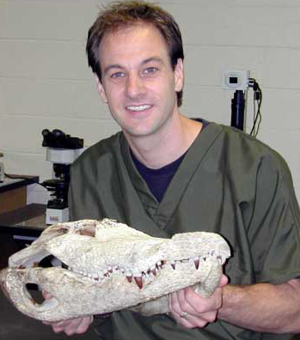
A new review by a team of paleontologists and biologists, including a Florida State University professor, gives a modern look at where birds come from and how they evolved from dinosaurs.
“We’re looking at what points in time that feathers, flight, and modern avian physiology and behavior evolved across the transition from dinosaurs to birds,” said Florida State University Professor Gregory M. Erickson, a co-author on the paper.
Once the topic of science fiction movies, the ancestry of birds has become ripe for scientific exploration and researchers have been able to trace their lineage.
The raptors in Jurassic Park aren’t that far off from today’s image of birds.
Erickson and an international team of biologists and paleontologists outline the state of scientific research and what we know today about birds’ origins in the journal Science.
Erickson and his colleagues have been studying the evolution of these creatures for the last decade. In that time, scientists discovered that dinosaurs predated birds in having feathers and wings for gliding and that birds grew physiologically more like dinosaurs.
“Fundamentally the first birds were just flying dinosaurs,” Erickson said. “Modern avian attributes such as rapid growth rates and single ovary egg deposition evolved later in time.”
The paper examines the transitional characteristics from dinosaur to bird, such as its eggshells, embryos, nesting patterns and growth rates. Many of those characteristics associated with our modern-day bird can be traced to the maniraptoran theropod dinosaurs, such as oviraptorosaurs and troodontids.
Evolution has certainly changed many aspects though, Erickson said, and how birds grow is one major facet that continues to be explored.
Bird-like dinosaurs, for one, grew much more slowly than modern birds and often took more than a year to reach full maturity. Modern birds in contrast have a faster metabolic rate and are often at full maturity in less than a year.
Erickson collaborated on the review with researchers from the Institute of Paleontology and Paleoanthropology, Chinese Academy of Science, University of California-Berkeley, University of Southern California, Montana State University, NCI-Frederick NIH, and Cheng Kung University (Taiwan).




